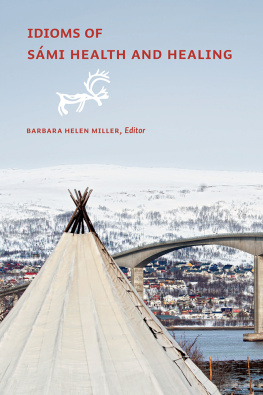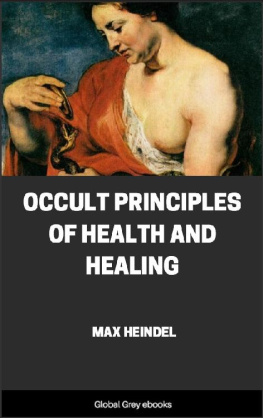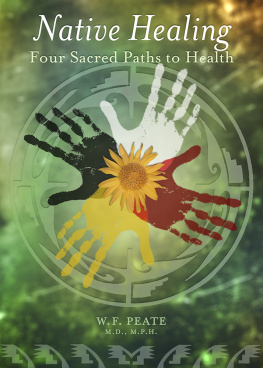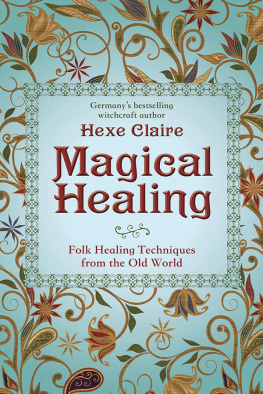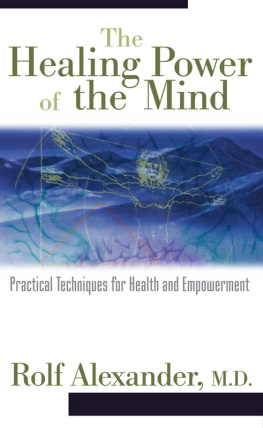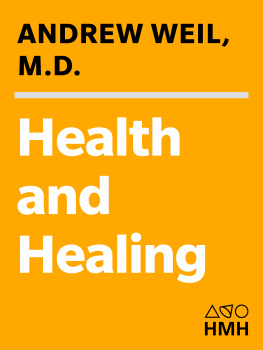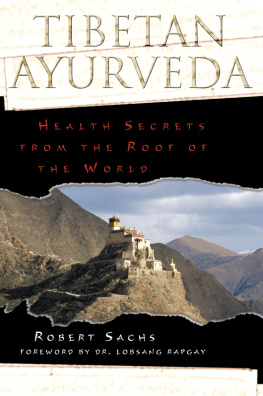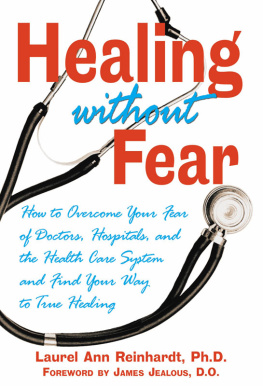
Published by
The University of Alberta Press
Ring House 2
Edmonton, Alberta, Canada T6G 2E1
www.uap.ualberta.ca
Copyright 2015 Barbara Helen Miller and Earle Waugh
Library and Archives Canada Cataloguing in Publication
Idioms of Smi health and healing / Barbara Helen Miller, editor; Earl Waugh, series editor.
(Patterns of Northern traditional healing series ; volume 2)
Includes bibliographical references and index.
Issued in print and electronic formats.
ISBN 978-1-77212-088-2 (paperback). ISBN 978-1-77212-104-9 (pdf). ISBN 978-1-77212-105-6 (epub). ISBN 978-1-77212-106-3 (mobi)
1. Sami (European people) Medicine--Europe, Northern. 2. Sami (European people) Health and hygieneEurope, Northern. 3. HealingEurope, Northern. I. Miller, Barbara Helen, 1949-, editor II. Series:
Patterns of Northern traditional healing series ; v. 2
| DL442.L3I35 2015 | 305.8945745 | C2015-905809-0 |
| C2015-905810-4 |
ISSN 1927-9671
First edition, rst printing, 2015.
First electronic edition, 2015.
Digital conversion by Transforma Pvt. Ltd.
Copyediting and proofreading by Angela Wingfield.
Map by Wendy Johnson.
Indexing by Stephen Ullstrom.
Book design by Marvin Harder.
All rights reserved. No part of this publication may be reproduced, stored in a retrieval system, or transmitted in any form or by any means (electronic, mechanical, photocopying, recording, or otherwise) without prior written consent. Contact the University of Alberta Press for further details.
The University of Alberta Press supports copyright. Copyright fuels creativity, encourages diverse voices, promotes free speech, and creates a vibrant culture. Thank you for buying an authorized edition of this book and for complying with the copyright laws by not reproducing, scanning, or distributing any part of it in any form without permission. You are supporting writers and allowing University of Alberta Press to continue to publish books for every reader.
The University of Alberta Press gratefully acknowledges the support received for its publishing program from the Government of Canada, The Canada Council for the Arts and the Government of Alberta through the Alberta Media Fund.
This work is published with the assistance of the Centre for Health and Culture, Department of Family Medicine at the University of Alberta, as well as a grant from the Western Canadiana Publications Project.

Generous funding assistance for this volume was provided by Ms. Marion Waller in memory of her beloved companion, Mr. Robert Aitchison .
Contents
DAVID G. ANDERSON
EARLE WAUGH
BARBARA HELEN MILLER
Research Practices in the Colonial Contact Zone
STEIN R. MATHISEN
ANNE KAREN HTTA
Heritage and Gifts of Grace
MARIT MYRVOLL
Examples from Porsanger
BARBARA HELEN MILLER
KJELL BIRKELY ANDERSEN, SIGVALD PERSEN, AND BARBARA HELEN MILLER
Lived Life and Experiences of Local Food Change in the Russian Arctic
TRINE KVITBERG
Understanding Northern Troms as a Therapeutic Landscape
MONA ANITA KIIL
Everyday Life Between Knowledge Systems in the Markebygd Areas
RANDI NYMO
Connecting to Smi Epistemic Practice
BRITT KRAMVIG
Foreword
The circumpolar north today is a region built of stark contrasts. While it is often characterized by its climate, or even its harshness, each northern community demonstrates an attention to well-being, or even intimacy, which is thought to be absent in southern urban spaces. Set within one of the last great global frontiers of resource extraction, the circumpolar Arctic is awash in money and infrastructure, and yet northern communities are often the poorest or most vulnerable among northern nation-states. With this cacophony of contrasts it is sometimes hard to hear the local initiatives and ideas which lend resilience to northern lives. In this volume, Barbara Helen Miller has carefully drawn our attention to the plurality of approaches to healingthe idiomsthat one can find in several Smi communities. She presents a strong argument that communities subjected to colonization are never completely colonized. They harbour often unexpected approaches which lend a sense of balance and autonomy. The key to understanding these pathways, as every author here demonstrates, is through attending to and listening to the experiencesand dreamsof the local residents. The role of the inspirational Smi reader is often to draw attention to the clues to which the patient is attuned. The role of this volume similarly is to direct our attention to avenues of healing which may be unexpected.
For those familiar with the literature on the circumpolar north, one of the more unexpected lessons in learning about Smi healing strategies is the significant absence of drums, shamans, and medicine. This is an absence built of expectation and not attention. As Stein Mathisen outlines in his subtle cultural history of the colonial contact zone, northern Scandinavia for a long time has been an arena in which one hopes to find the survivals of lost traditions. This expectation itself disempowers local community actors, who, like everyone else, engage with the evocative traditions that work for them. Unlike in eastern Siberia or the Canadian Arctic, the power of texts and Christian rituals play an important role in northern Scandinavian communities. This is sometimes understood to be the result of acculturationor of loss. This volume demonstrates that these qualities are instead a strength and a testament to the creativity of local healers.
The contributors to this volume, while cautious of institutional biomedicine, also recognize its value in certain circumstances. The healers Kjell Birkely Andersen, Sigvald Persen, and Barbara Helen Miller speak from their own experience to help their patients identify stories that explain their sense of fortune, as well as shed light on the social welfare ministries which provide the financial spaces for survival. Smi healing in this idiom is not an autochonous, radical exercise which turns its back on the world, but it suggests a thoughtful appropriation of the available resources including some of those offered by a state that once brought colonization. This untidy picture of central institutions which sometimes colonize and sometimes offer respite is a common trope across the North, and one which requires more examples and more discussion to be understood fully. This series is a strong step in that direction.
The contributions to this book were assembled through a similarly untidy dialogue. The papers are based on a set of presentations made possible in part by an International Symposium grant from the University of Troms. A symposium, in June 2010, brought together students of the healing practices in three different regions of the North: eastern Siberia, Northern Norway, and western Canada (through the thoughtful comments of the series editor, Earle Waugh). From our discussions and travel together then, I think we all remember our surprise at the very different ways in which difficult topics such as the use of alcohol, or the public attribution of landscape spirits, were handled in regions which many of us expected to be roughly similar. The symposium was held in an institution with a strong northern mandate. It has since been renamed the Artic University of Norway, yet it is probably not a secret that the large hospital and associated medical school based at the university is one of the stricter examples of a centralized approach to the delivery of services. This site, at once centralized and at the same time open and hospitable, was the site where two volumes of the Patterns of Northern Traditional Heading series were born. It is my sincere hope that this productive paradox will continue to inspire debate and attention to the idioms of health and well-being across the North. This volume is a sincere and powerful contribution to that end.
Next page
